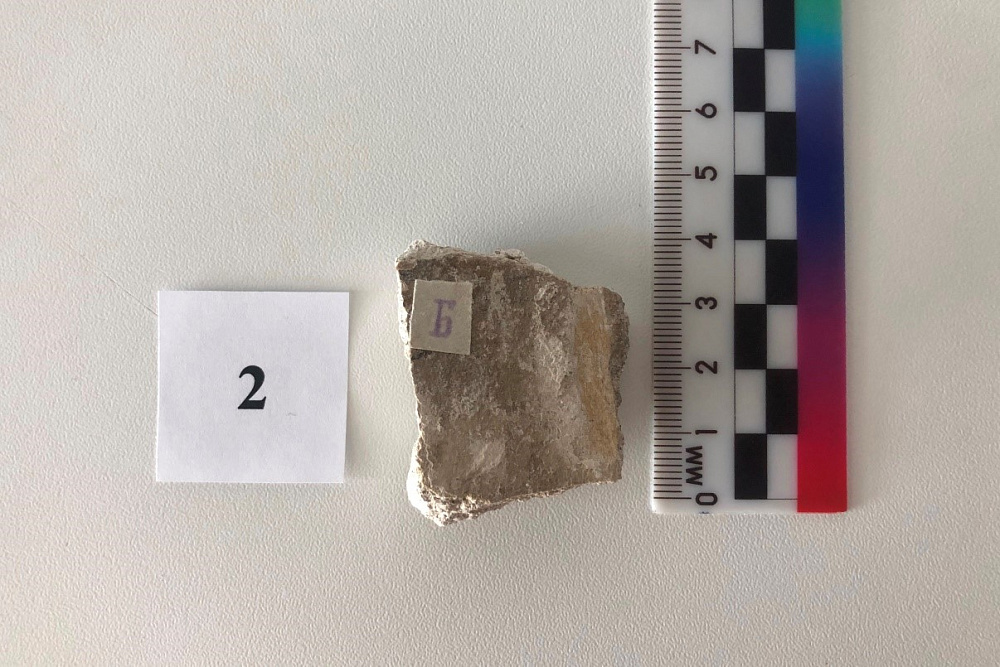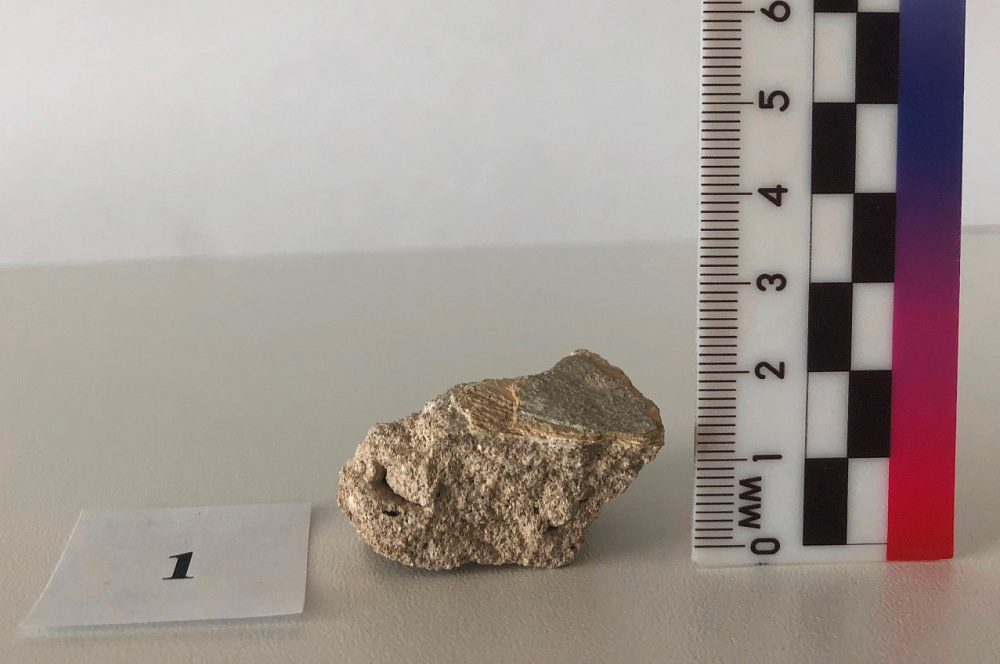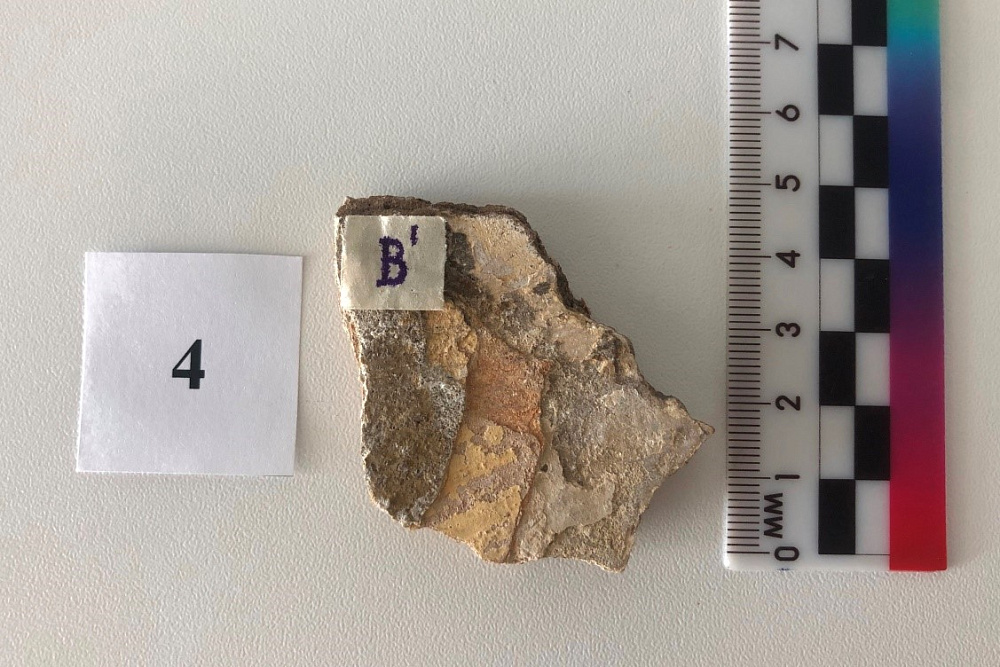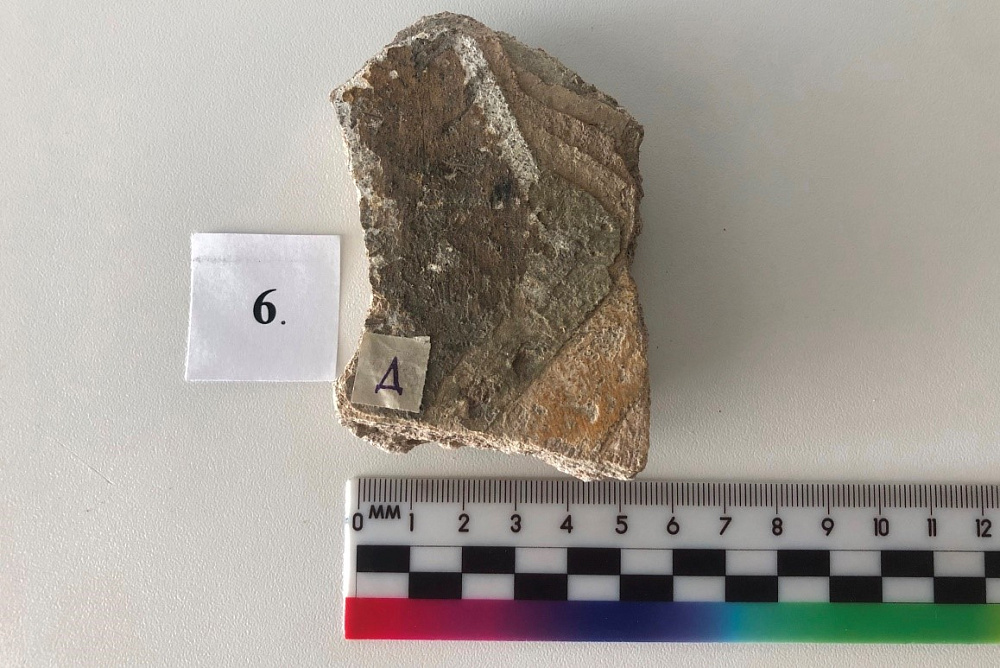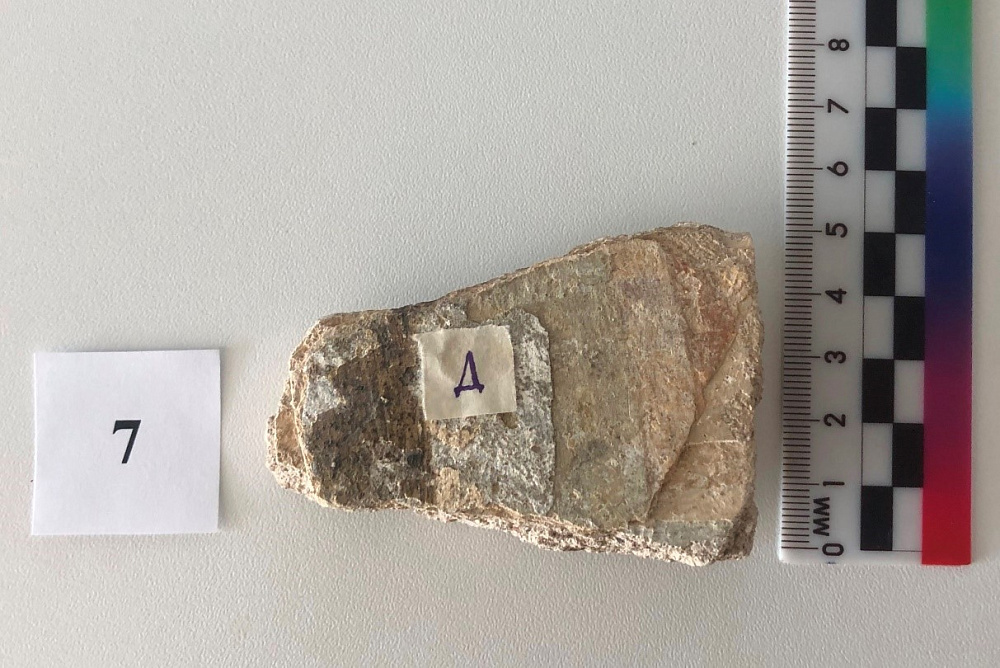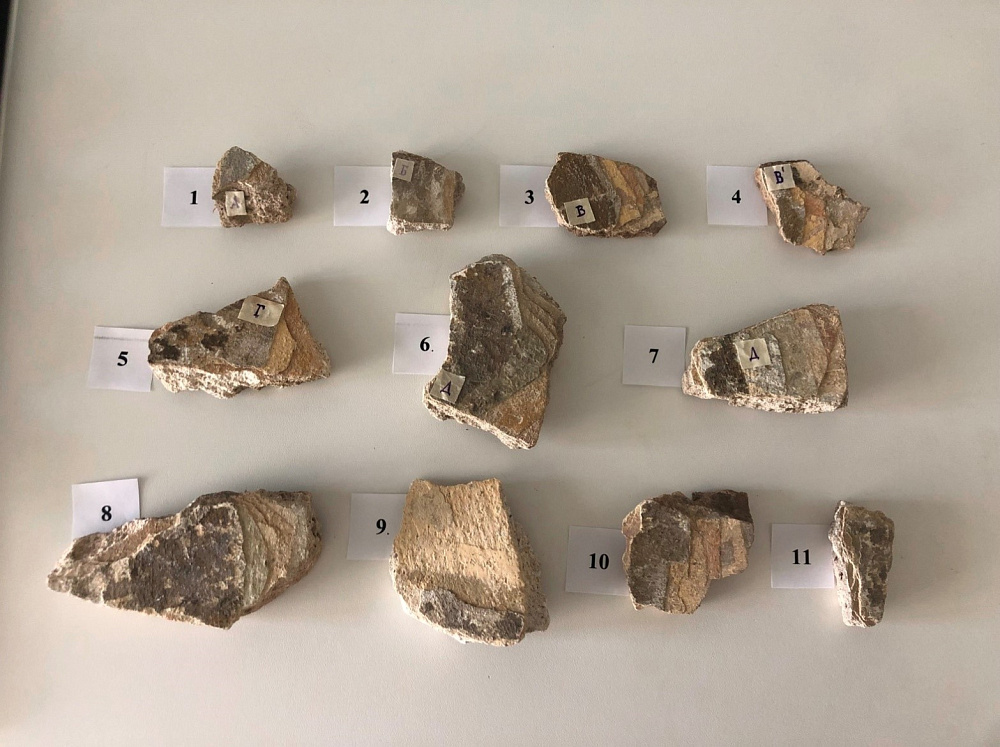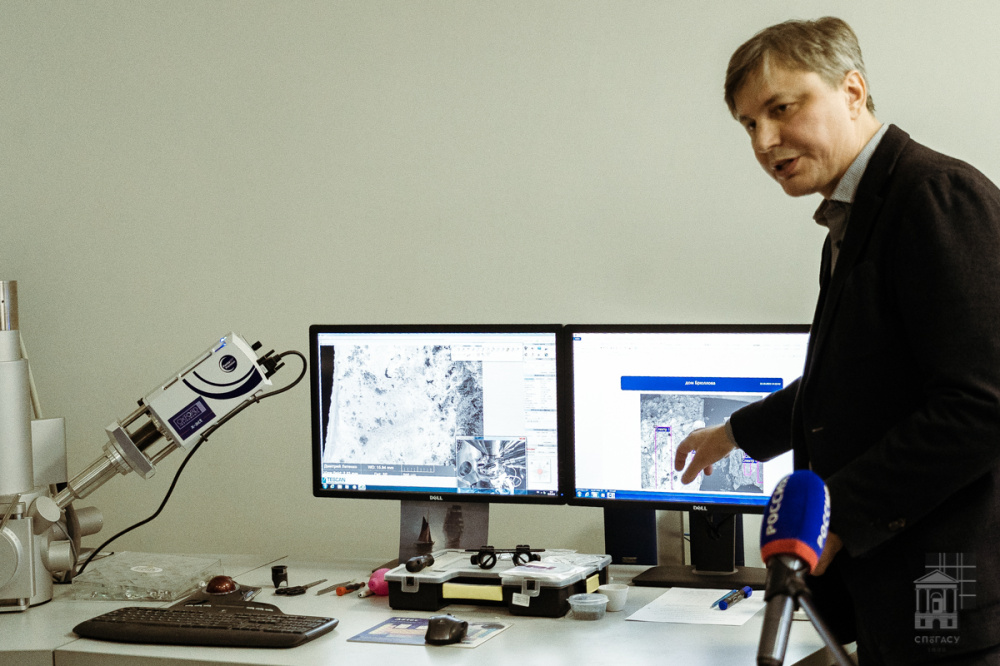 Aleksey Kharitonov demonstrates the operation of an electron microscope
Aleksey Kharitonov demonstrates the operation of an electron microscope
The laboratory of the SPbGASU Department of Technology of Construction Materials and Metrology has completed studies of samples of plaster mortars and other finishing materials of the house of architect Aleksandr Bryullov.
The house of the architect A.P. Bryullov is a historical mansion on Vasilyevsky Island in St Petersburg, located at the address: Kadetskaya Line, 21. It was built in 1784, and rebuilt in 1845 according to the owner’s own design, architect Aleksandr Bryullov. From 1907 to 1918, the house belonged to the architect Pavel Syuzor, who created the Museum of Old Petersburg here, the collections of which became the basis of the museum of the history of the city. In August 2023, the Committee for State Control, Use and Protection of Historical and Cultural Monuments of St Petersburg (KGIOP) agreed on a project for restoration, repair and adaptation of the building for modern use, and in October issued a permit to carry out the work. SPbGASU researchers determined the composition of the lime-gypsum mortars with which the facades of the building were plastered. We found out how surfaces were prepared for painting and what the historical paint layers consisted of. In addition, the researchers were able to select shades that were as close as possible to the colors of the original paint of the facades.
“Based on the data obtained, the chief architect of the project will be able to select materials that match the composition and properties of the original historical ones. If such materials do not exist, he will formulate technical specifications for their creation. In addition, our data will allow us to reasonably select conservation technologies,” said Aleksey Kharitonov, professor at the SPbGASU Department of Technology of Construction Materials and Metrology.
Samples were provided from its collection by the Committee for State Control, Use and Protection of Historical and Cultural Monuments of St Petersburg as part of an agreement signed in December 2023 between SPbGASU and KGIOP. The university has been cooperating with the committee for many years. The samples provided are valuable for their historicism. The document attached to them was drawn up on 9 April, 1947, which increases the chances of not confusing the original layers with the “remake”.
In April 2024, the parties signed another agreement, according to which SPbGASU created a corporate department of KGIOP, which would focuse on coordinating a large amount of work in the educational and scientific fields.
Among the areas of work of the department is the training of qualified personnel with competencies for activities related to the restoration of cultural heritage sites; assistance in the development of new educational programs of all levels and types in accordance with the requirements of the regional industrial labor market and the current level of tasks in the field of restoration of cultural heritage sites; ensuring the integration of education, science and production as the most important condition for improving the quality of training of personnel of higher education.
The next object of research by SPbGASU scientists is Yusupov’s house on 86, Nevsky Prospekt.

 при увеличении ×80.jpg)
 при увеличении ×80.jpg)









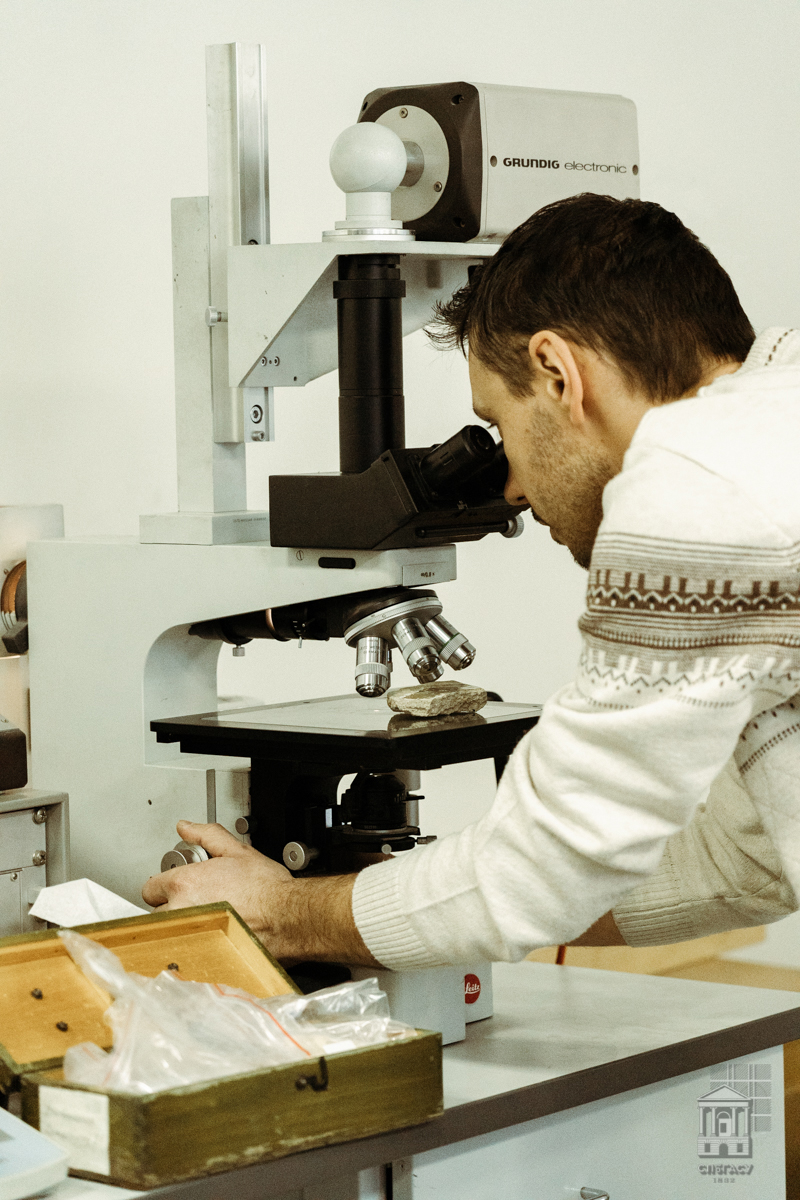
 при увеличении ×80.jpg)
 при увеличении ×80.jpg)
